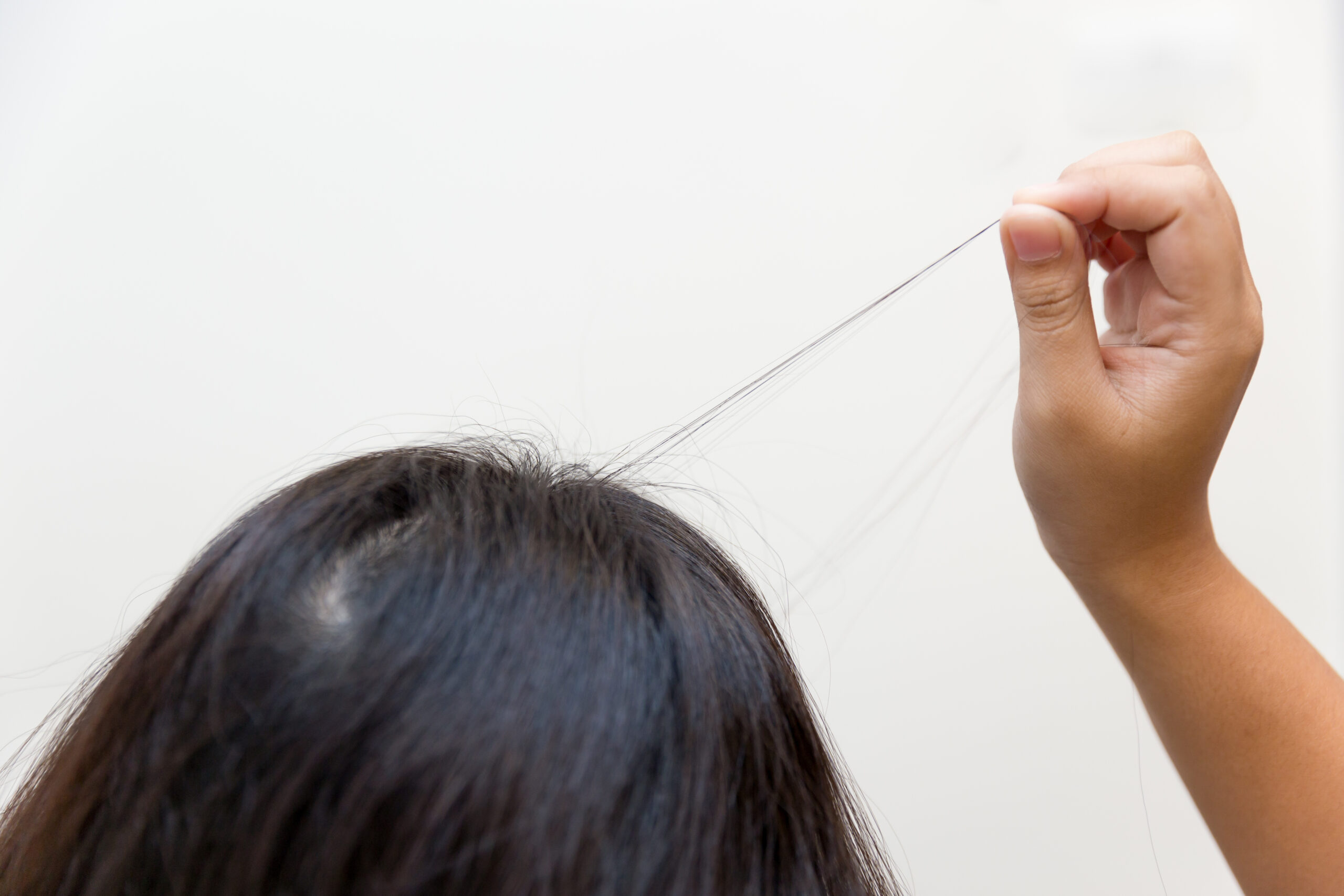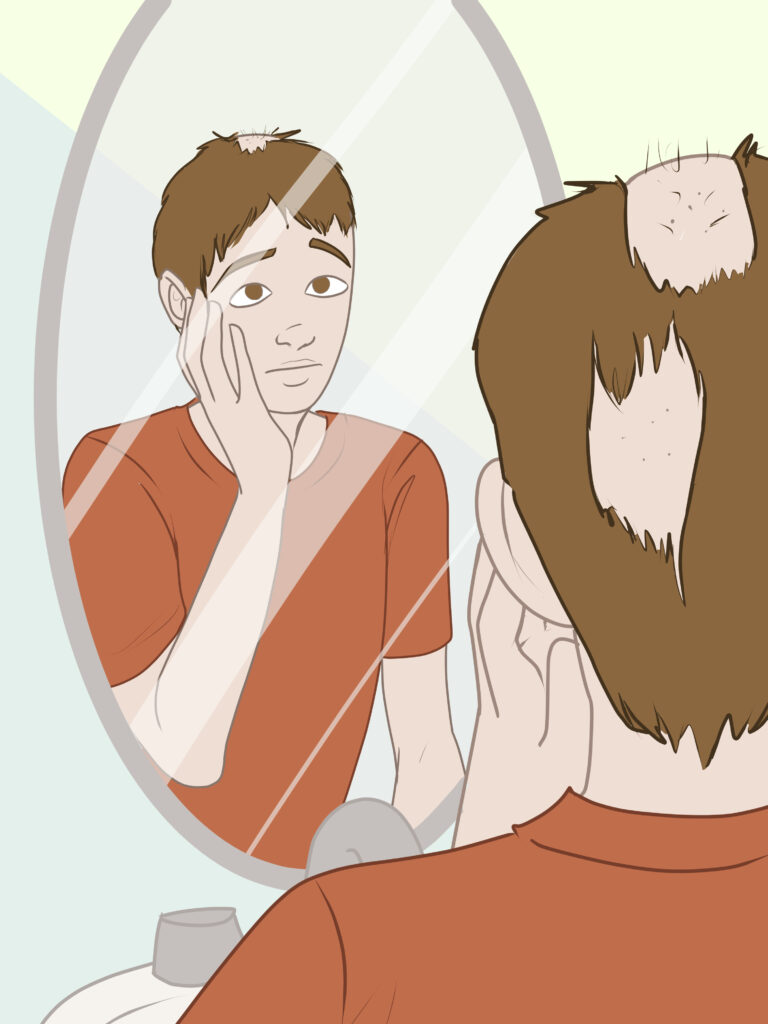Trichotillomania can affect your life both physically and emotionally. I know it’s not easy to suffer in silence. While I’m here to offer a discussion about the possibility of a remedy for trichotillomania, it is important to note that I recommend professional treatment as well as practicing these methods at home.
Now let’s jump right into some background!
What is Trichotillomania?
Trichotillomania is characterized by repetitive pulling out of one’s hair from anywhere on your body- such as the scalp, eyebrows, eyelashes, etc. According to the Diagnostic and Statistical Manual of Mental Disorders of the American Psychiatric Association, to have trichotillomania you must meet 5 different criteria below:
- Hair loss as a result of pulling out hair
- Multiple attempts to stop hair pulling
- Hair pulling causes problems in your personal or work life
- The hair pulling or hair loss is not due to another medical condition (e.g., a dermatological condition).
- The hair pulling is not better explained by the symptoms of another mental disorder
How To Treat Trichotillomania?

Trichotillomania is a body focused repetitive behavior and requires therapy to overcome it. Cognitive Behavior Therapy (CBT) is considered the gold standard of therapy to treat trichotillomania. This approach to therapy focuses on identifying thoughts, feelings, and behaviors that are negatively affecting you and as a result shows you how to identify and change these factors which are impacting your life.
Can I Completely Stop Hair Pulling?

Within the framework of CBT therapy, I work with my patients on Habit Reversal Training (HBT). The three components to HBT that are crucial for success are awareness training, competing response training, and social support. Clients who are very motivated to end their hair pulling can see significant improvements within the first couple of months of treatment. Most clients will reduce pulling behaviors by 50% in the first month and up to 75% in the second month of treatment. 98% of clients are able to be pull or pick free by the end of treatment with Dr. Ori. Once most client’s begin to pull their hair very few (or no) times, we begin to work on relapse training with monthly check-ins.
Trichotillomania Cure? Let’s talk about Habit Reversal Training

Step 1:
In order to stop hair pulling it’s important to practice the Habit Reversal Training at home. Through CBT, I encourage clients to identify their negative factors. Identify what area of the body you pull from as well as which hand. Imagine yourself hair pulling and remember all the negative factors it has on your life: your self-consciousness, if you hate getting a haircut, being limited to wearing hats, etc.
Step 2:
Then I encourage you to identify all the positive outcomes related to ending your hair pulling. Your hair may grow thicker, you will gain confidence, you feel happier at work and in your relationships because hair pulling is no longer in the way.
What has been the biggest challenge for you since hair pulling? Imagine yourself overcoming that challenge. If you’re struggling to get haircuts, imagine you’ve stopped hair pulling and your hair has grown back. You make a haircut appointment at your favorite salon or barbershop and get your hair done. They tell you how great it looks and at work the next day all your coworkers compliment your new look. I recommend these tips for manifesting your future, which you can use to imagine your life without trichotillomania alongside your other life goals.
Increasing awareness of your pulling is key to fighting your urges. I recommend you begin a daily self monitoring log to document details of your pulling behavior and track your progress. Create an accurate representation of all your “pulling” details, including time and day of your episode, how many hairs you pulled, your location or situation, and your thoughts/emotions before and after pulling. This increased awareness of your habit will help combat your urges by empowering your “awareness” brain and reducing the potency of your “pulling” brain.
Step 3:
The last step in a remedy for trichotillomania is the combination of step 1 and step 2. You did a great job identifying your goals and motivating yourself to step up. But now let’s put it into practice. Everytime you go to pull your hair, remember the negative emotions hair pulling has given you. Remember how it has made you feel and how it has made your life more difficult. Then throw it away. Erase those negative thoughts from your mind and skip to step 2. Imagine how great your life would be if you did not pull your hair. Imagine what life would be like if it did not invade your personal or work spaces. Think of your dream scenario- like being complimented on your hair. Instead of focusing on how poorly hair pulling makes you feel, you are now focusing on the factors which will motivate you to stop. Continue to monitor your pulling behavior with as much detail as possible. Include your thoughts and emotions before, during and after episodes and report that information to your therapist, if you have one.
You have to work at it everyday. Here are some other tips from trichotillomania patients that have worked to help them pull less. You may struggle to even realize you’re pulling your hair until it’s too late. Or you may use the methods above and still pull several times a day. But I do not expect perfection from you! You’ve built a strong habit and it takes time, patience, and persistence to be able to overcome it.
